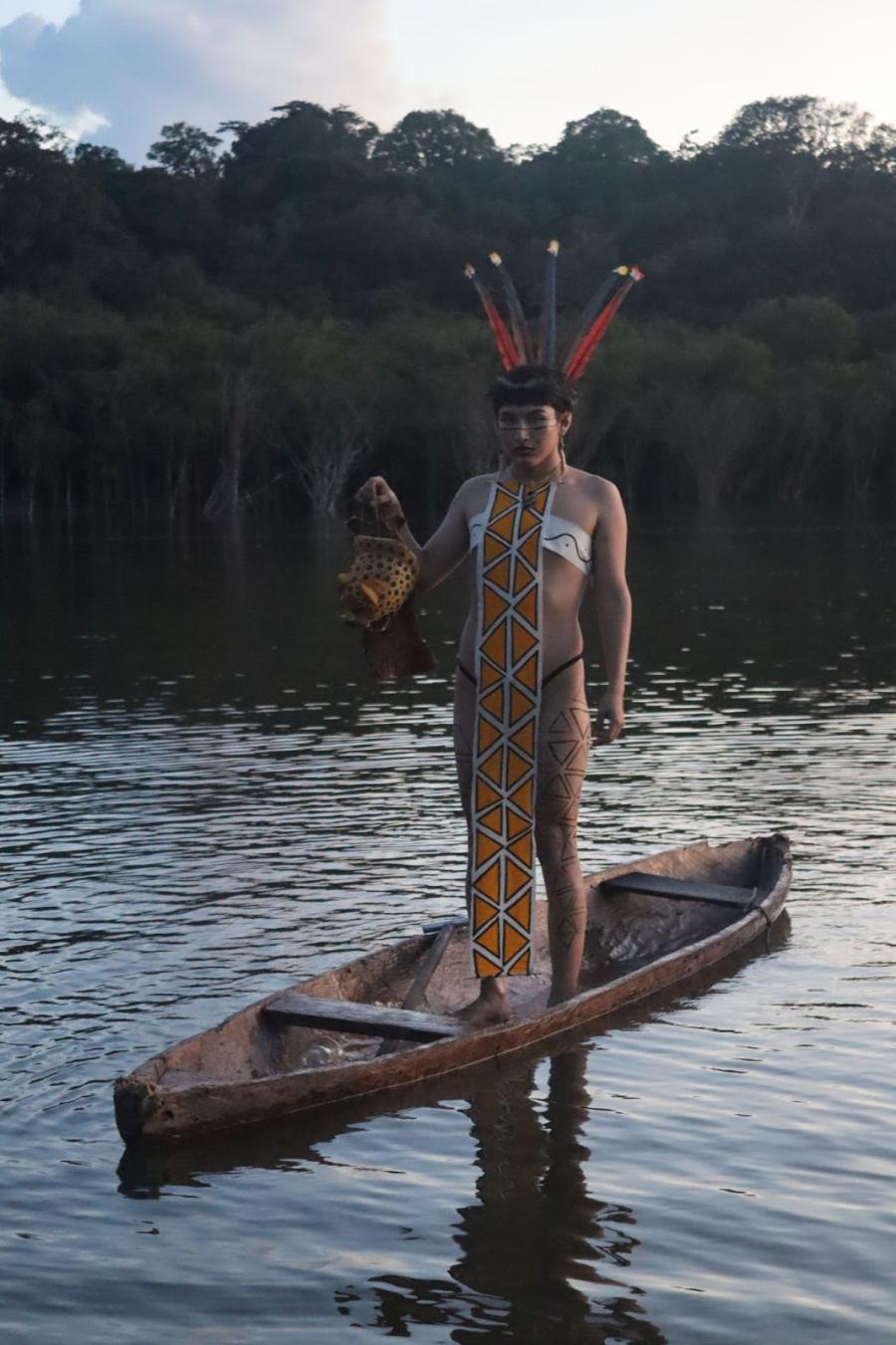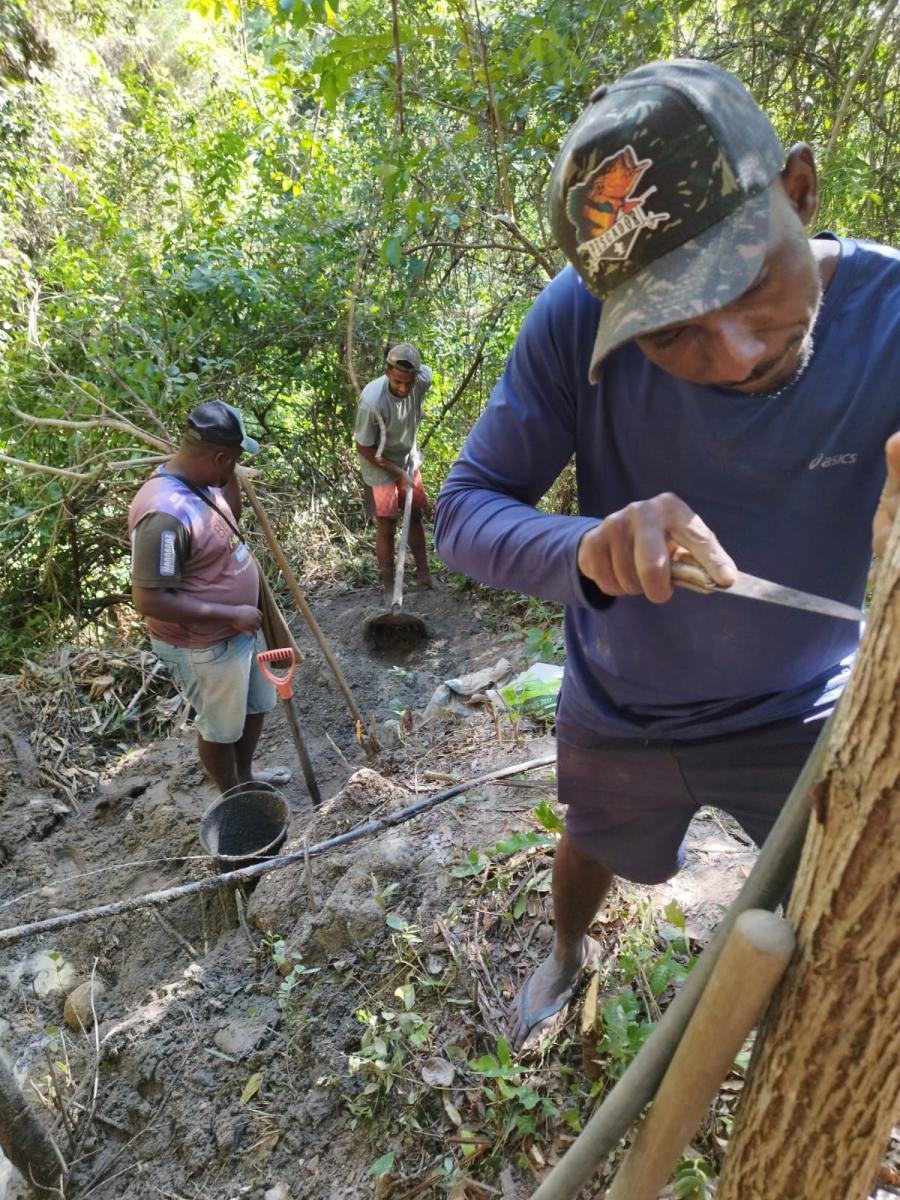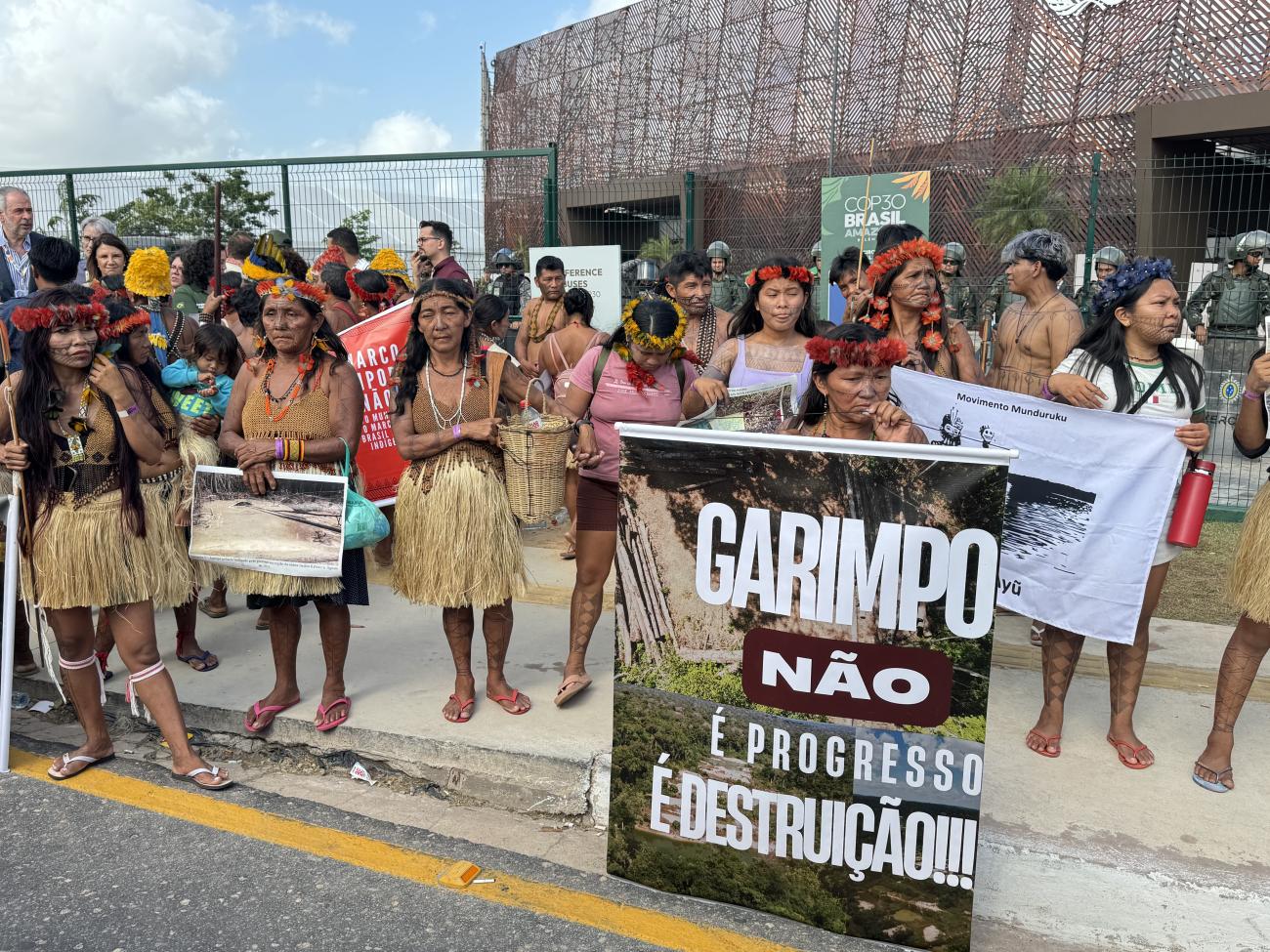
By Dev Kumar Sunuwar (Koĩts-Sunuwar, CS Staff)
This year’s major global climate meeting, the 30th Conference of the Parties (COP30) to the United Nations Framework Convention on Climate Change (UNFCCC), was held in Belém, Brazil, the gateway to the Amazon. It was special because the summit returned to Brazil. Brazil hosted the UNFCCC’s creation in 1992 and the establishment of the COP processes. This year marked the largest-ever participation of Indigenous Peoples in COP history, with over 3,000 Indigenous Peoples' representatives. Therefore, it was branded as the "Indigenous COP," as it aimed to highlight the guardians of biodiversity. However, for Indigenous Peoples, this summit was one of the most frustrating and disappointing conferences.
The COP is the main decision-making body for the UNFCCC, an international treaty signed by 197 countries and the European Union since its adoption in 1992 at the Rio Earth Summit held in Rio de Janeiro, Brazil. Thirty years after the treaty’s founding, the annual conference felt like "just another conference" despite being held on Indigenous Peoples’ land.
This two-week major global climate change meeting, held from November 10-21, 2025, brought together government representatives from 198 countries, parties to the UNFCCC, UN agencies, civil society, academia, the private sector, and a significant delegation of Indigenous Peoples, women, and youth.
Protests and Limited Access
The participation of Indigenous Peoples broke a COP record, but their high attendance did not translate into influence. According to Earth.org, approximately 2,500 representatives of Indigenous Peoples from Brazil were expected to participate this year. However, despite all the government's assurances, only 14% (360 Indigenous Brazilians) received accreditation to visit the Blue Zone (the official negotiation area).
On November 11, on the very second day of COP, hundreds of Amazonian Indigenous land defenders, including Indigenous leaders from the Tapajós River in Pará, Brazil, clashed with security personnel at the venue’s main entrance. They were demanding that their voices be heard in the negotiations and that solutions affecting them not be presented without their participation. They were wearing traditional clothes adorned with traditional art, painted on their faces and bodies, and marched towards the highly secured Blue Zone. They chanted slogans against Brazilian President Luiz Inacio Lula da Silva's government, carrying slogans and chanting, "Lula’s government, shame on you, you are destroying the climate with drilling.” Carrying flags and signs that read "Our land is not for sale" and "we can’t eat money, we want our lands free from agribusiness, oil exploration, illegal mining, and illegal logging.”
Their message and voice were clear: “Treat us not as observers or guests, rather as right-holders.”
On November 14, members of the Munduruku Indigenous Peoples blocked the COP30 entrance for about an hour, demanding a meeting with President Luiz Inacio Lula da Silva to share the plight of their communities. This led to negotiations with the COP presidency to push for the immediate demarcation of their land to protect them from extractive industries, such as agribusiness, mining, and oil and gas extraction. The demarcation is a status that legally recognizes Indigenous Peoples’ rights and allows them to challenge extractive industries in their territories through the court system.
In response to these peaceful protests, armed police and military security forces were increased in the COP venue and in the surrounding streets. This heavy security highlighted the division between Indigenous Peoples whose lives depend directly on the environment and those focused on negotiation processes.
Indigenous Peoples' representatives were deeply angered and frustrated, and they were trying to leverage COP30's visibility to pressure the Lula government to honor the promises they had previously made to Indigenous Peoples. They also expressed concern that their voices and views were not heard, as negotiations were conducted in English with no translation into Portuguese or other languages.
A few were in the Green Zone, a distinct, public platform for engagement, education, and the showcasing of solutions by non-state actors. Many Indigenous Peoples from across Brazil travelled to Belém for COP but remained in Aldeia COP (a large village and cultural center that hosts Indigenous Peoples from Brazil) as only a small fraction had credentials to enter the COP30 venue. A brief interaction with Cultural Survival delegates, the Indigenous leaders and delegates, who remained in Aldeia, shared that their river, the source of water, is already contaminated from illegal mining conducted in their territories without Free, Prior and Informed Consent, and sought help for visibility and to seek justice.
Feeling excluded and exhausted, some Indigenous Peoples made a final, desperate attempt to enter the negotiation zones so that their voices could be heard, but they were stopped by UN security and military forces.
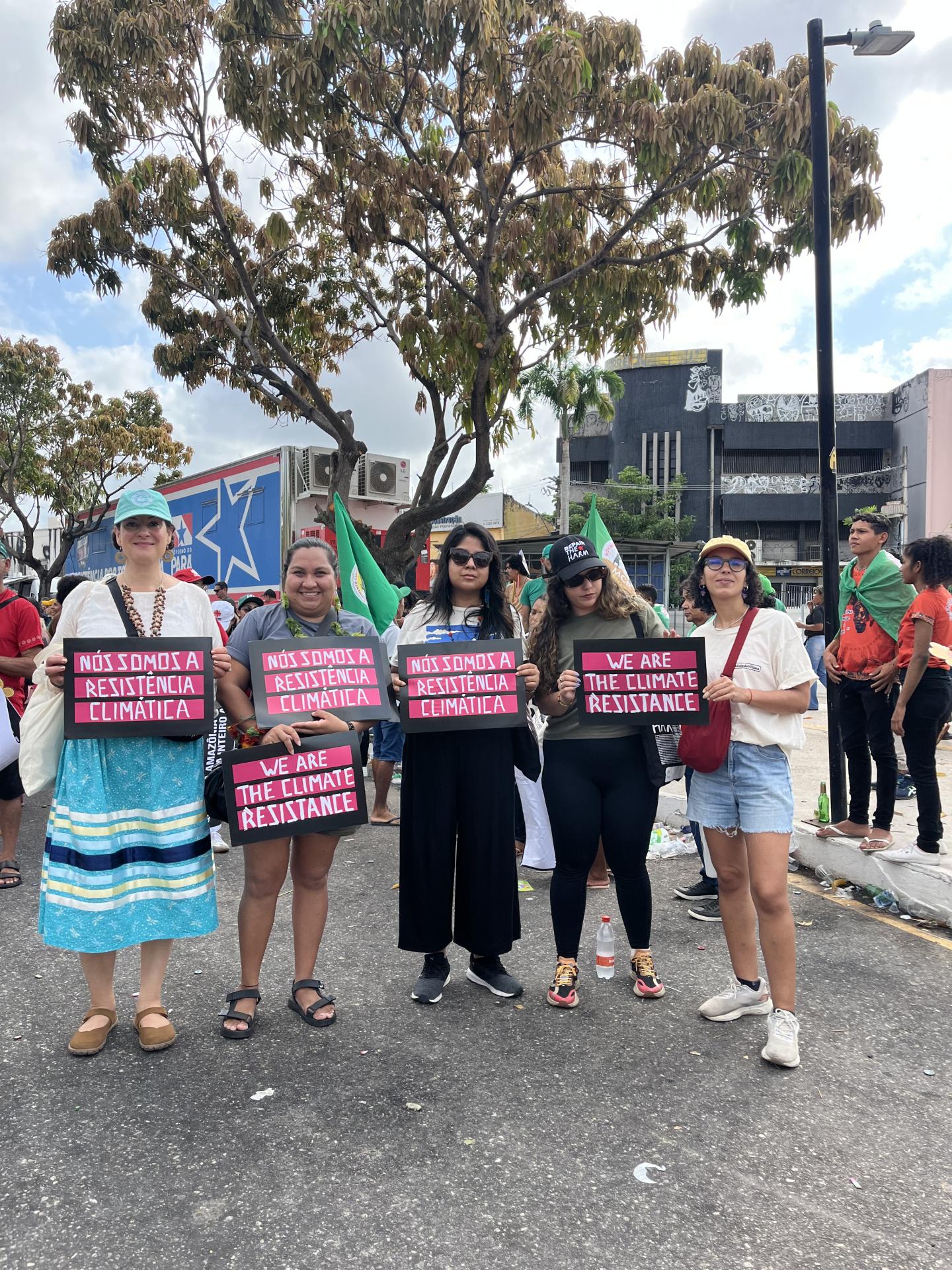
On November 15, thousands of people also took to the streets peacefully in what was termed the Great Peoples’ March. They came together playing music, waving flags, chanting, and dancing on the sidelines of the COP30 to call for action against climate change. The gathering spotlighted the voices of Indigenous Peoples, who are directly affected by the degradation of the Amazon forest.
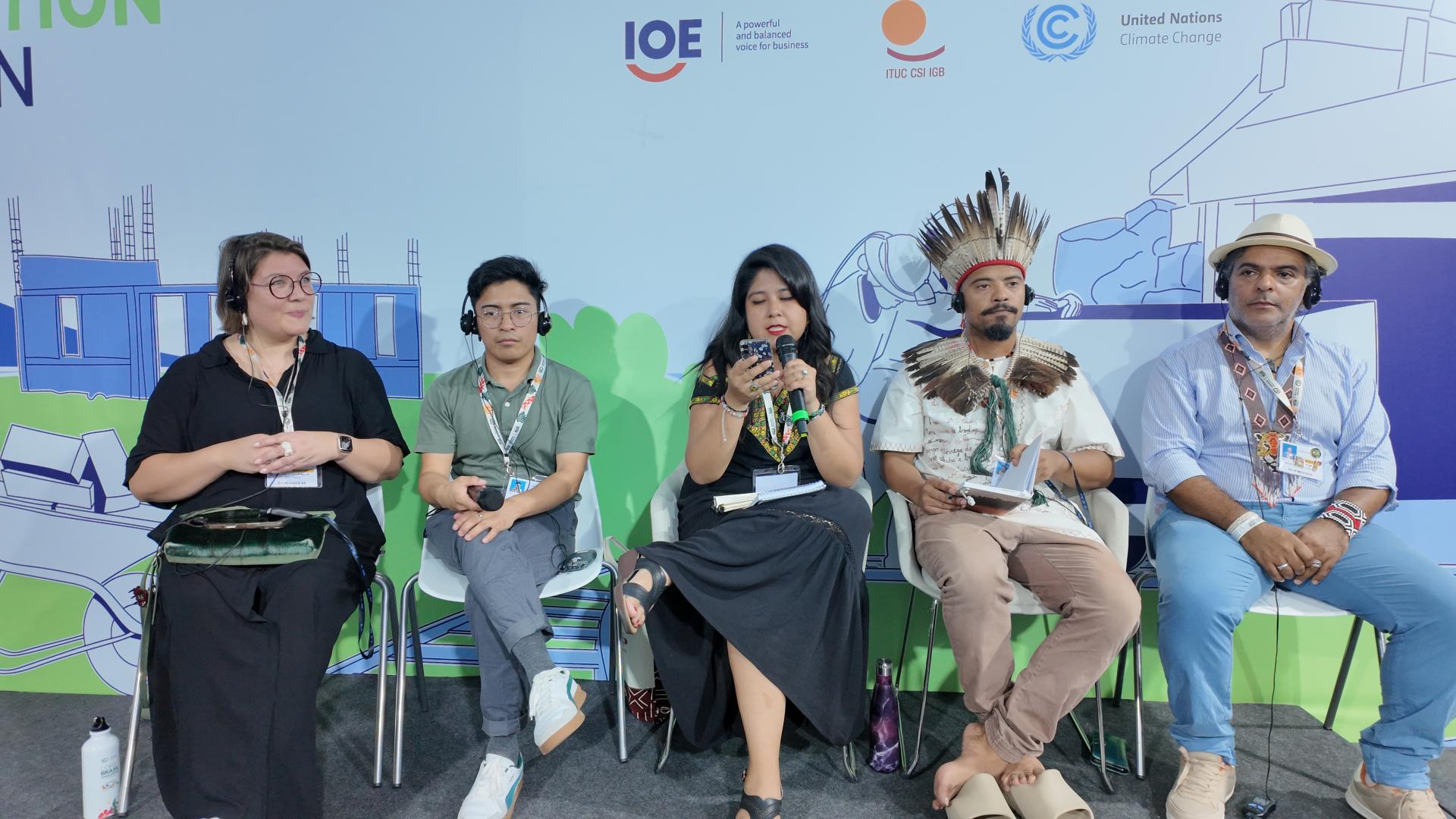
Land Recognition and Climate Finance
There were some positive announcements. On November 17, the Brazilian government announced the demarcation of 10 new Indigenous lands, particularly on the Indigenous Peoples’ Day at COP30. These lands are mainly inhabited by the Mura, Tupinambá de Olivença, Pataxó, Guarani-Kaiowá, Munduruku, Pankará, and Guarani-Mbya Peoples. The new demarcations signify institutional recognition of Indigenous land rights and the definition of territorial boundaries. With this announcement, 21 Indigenous lands are now officially recognized, each with demarcated land and territories. Currently, Indigenous lands cover 117.4 million hectares, or about 13.8% of Brazil’s territory—areas that include some of the largest continuous tracts of tropical forest on the planet. According to the 2022 demographic Census, Brazil is home to 266 Indigenous Peoples, representing 1.7 million of the total 203 million population.
Additionally, just before the COP30 climate summit, the COP30 Leaders’ Summit made three landmark commitments.
First, the establishment of Tropical Forests Forever Facility (TFFF), a new financial mechanism with a $125 billion fund, which ensures that at least 20% of the funds are directed to direct access by Indigenous and Local communities.
Second, 35 government and philanthropic funders have pledged $1.8 billion over five years in a forest and land tenure initiative. This pledge clearly commits to providing direct access to funding for Indigenous Peoples, local communities, and Afro-descendant communities to secure land rights, advance Indigenous-led climate and biodiversity action, and support Indigenous Peoples’ and community forest tenure rights to halt deforestation.
The third is a collective commitment to recognize and strengthen 160 million hectares of Indigenous Peoples' and local communities' lands and forests by 2030 through intergovernmental land tenure commitments.

Exclusion in Decision-Making
Traditionally, at COP, the Presidency convenes dialogues with parties and recognized constituencies. These dialogues have always played an important role in developing a work plan for fully implementing functions and in ensuring balanced representation of recognized observer groups and the parties. In a significant breach of COP tradition, the Presidency failed to attend a scheduled dialogue with the Indigenous Peoples Organization (IPO), one of the nine official constituencies in the UN processes.
“This year, the COP presidency did not show up at the Indigenous Peoples Organization,” said Hindou Ibrahim, Co-chairing the IIPFCC, at the last Indigenous Caucus meeting held on 21st November. IIPFCC serves as a political and coordinating body, officially recognized as a constituency at COP7 in Morocco in 2001.
Indigenous Peoples from Latin and North America, Africa, Asia, and the Arctic came to COP30 with solutions and demanded to be heard, "not as observers or guests, but as right-holders.” Many organized side events, held bilateral and press meetings, met with delegates, and raised their issues, such as illegal logging, mining, and agribusiness, also issues that continue to displace them from their lands, territories, and resources.
COP30 was also labeled an "implementation COP," as it was held during the 10th anniversary of the Paris Agreement, a conference that aimed to celebrate progress over the last decade and push for further implementation of the agreement’s goals. Thus, many expected it to finally lead to specific, measurable national action plans. As usual, the negotiation agenda covered topics such as adaptation, phasing out fossil fuels, a just transition, mitigation, loss and damage, climate finance, the carbon market, and technology, among others.
In the end, the negotiation delivered a deal in which countries agreed to triple adaptation funding to roughly $120 billion a year for vulnerable countries. However, the final decision did not mention the transition away from fossil fuels. The most significant outcome was perhaps the text and agreement of a "just transition mechanism," a plan designed by all countries to ensure that the shift to a green economy is inclusive, especially of Indigenous Peoples, and the importance of their rights and obtaining their Free, Prior and Informed Consent in accordance with the United Nations Declaration on the Rights of Indigenous Peoples (UNDRIP). The text includes a provision to ensure that all just transition pathways respect and promote the internationally recognized collective and individual rights of Indigenous Peoples, including the right to self-determination. Indeed, it is a praiseworthy provision and, no doubt, a victory for Indigenous Peoples in the COP process so far. Still, the pressure to close the gap between the countries’ pledged emissions cuts and the levels needed to keep temperature rises below 1.5 °C was weaker than hoped.
While the COP30 was a crucial moment to demonstrate coordinated action to stop and reverse deforestation, increase restoration, and promote Indigenous rights, for Indigenous Peoples, this year’s COP turned out to be a nightmare, despite record attendance.

